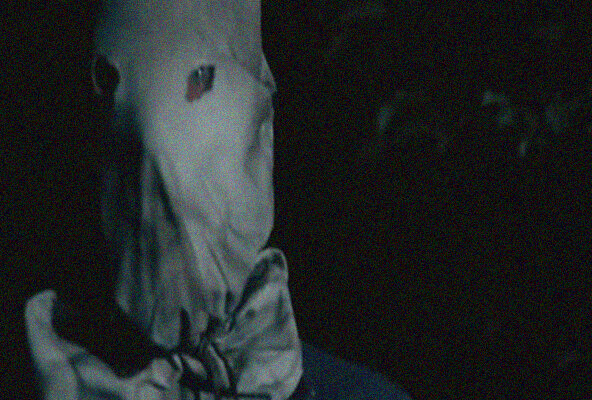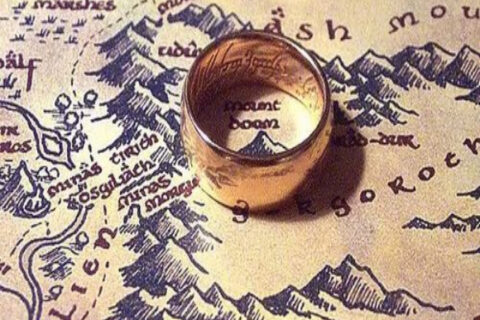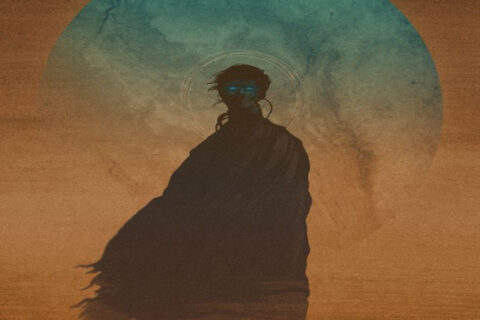In 1946 Texarkana, two Deep South towns situated on the Texas/Arkansas border was basking in the glory of victory (there is both a Texarkana, Texas, as well as a Texarkana, Arkansas, though they will be treated as one city in this article for the sake of convenience). World War II was finally over, and after almost 20 years of depression and war, the city looked forward to a new era of normalcy. The Depression had hit the cotton states very hard, but now things were looking up. They may had lost many of their sons in Europe and the Pacific, but now they were coming home. The future looked bright, and we should all remember that we cannot fault the good people of Texarkana for not owning a crystal ball.
It was in that warm glow of victory when terror struck – on February 22nd of that year, a young couple parked on lover’s lane were attacked, although not killed, by an unidentified assailant wearing a bag over his face. Sadly, it would not end there. As on March 24th, another young couple was attacked, again on lover’s lane. This time, they were killed, sending the city into a full-blown panic. Eventually, five people would die in a series of similar attacks that abruptly ended on May 3, 1946. The fate of the killer, or even his identity, was never uncovered, and although several suspects were named, even historians today have never come close to a consensus on who the killer was, what happened to him, or what his motivations were.
In 1976, thirty years after the Texarkana Moonlight Murders came to an end and the still unknown “Phantom Killer” disappeared as quicky as he appeared, Charles B. Pierce, that teller of Arkansas folklore, made a film adaptation of the murders. The resulting film, The Town That Dreaded Sundown, plays very lose with the facts of the case, but it also stands as his greatest film. The Town That Dreaded Sundown is a lean film that continues the docudrama style Pierce pioneered in The Legend of Boggy Creek. It also includes the best cast Pierce ever worked with, and lovingly designed sets. Pierce is even able to sprinkle in some moments of comic relief that work surprisingly well. We will examine what makes this all so wonderful now. But first and as a point of trivia – as iconic as Jason Voorhees’s hockey mask is, it’s remarkable to reflect on how he didn’t even get it until the third Friday the 13th film. His mother was the killer in the first film (spoiler alert, even though it came out in 1980); however, in the second film, the first with Jason as the killer, he wore a burlap sack on his head, a look taken from Pierce’s film.
As I mentioned in my previous article in this series, when all is said and done, Pierce’s greatest contribution to the art of filmmaking are his contributions to docudrama narration. We’ve become so used to this in the years since, it is hard to understand just how innovative Pierce was in this regard, but audiences of the 1970s during his heyday really had never seen anything like this. And while The Town That Dreaded Sundown employs a more traditional narration than The Legend of Boggy Creek, those docudrama elements are still present, and they help create the matter-of-fact tone that propels the film to great cinematic heights. Vern Stierman provides the narration here, his voice is highly reminiscent of the old newsmen of the 1940s and 1950s, giving the film a somber sense of realism.
Also, of note, is the cast Pierce is working with now. As a regional filmmaker, Pierce was often very limited in the actors he could use. He normally had to use unknown actors, and even sometimes, as in the case of The Legend of Boggy Creek, he had to use non-professional locals as actors. Now, Pierce is able to make this work most of the time, even using it to his advantage, as in the case of The Legend of Boggy Creek, as it further enhanced the documentary aspects of the film. But in The Town That Dreaded Sundown, Pierce is able to utilize a surprisingly well-known cast. Ben Johnson (The Wild Bunch, Major Dundee, Dillinger, Junior Bonner and tons of other great movies) headlines with his stunning portrayal of Texas Ranger Captain J.D. Morales, based on the legendary Texas Ranger M. T. “Lone Wolf” Gonzaullas. Ben Johnson gives the film a sense of gravitas that greatly helps it along and further enhances the sober tone Pierce is seeking to convey. Andrew Prine (Grizzly, Chisum, The Devil’s Brigade) is also on hand as a deputy sheriff and does a highly commendable job. Perhaps, the most surprising performance belongs to Dawn Wells. She was far more prolific than she’s remembered as being, but as most people, I am primarily familiar with her thanks to Gilligan’s Island. So, to see her in this, let alone playing a victim, is a bit jarring, but it does demonstrate that she is a far better actress than she’s commonly given credit for.
Despite pioneering the docudrama style of filmmaking, Pierce is well-known for sprinkling his films with humor, the results of which would become decidedly mixed as his career declined in the 1980s. The Town That Dreaded Sundown is the film in which Pierce’s humor works best, with several legitimately funny moments. These moments help lighten the mood in what is otherwise a very serious and dreary picture. Pierce even shows an ability to make himself a fool as he casts himself as the major comic relief character – the bumbling deputy, A.C. “Sparkplug” Benson. His character feels like a less entitled, though no more intelligent, predecessor to Junior Justice (Mike Henry) from Smokey and the Bandit.
As with The Legend of Boggy Creek, The Town That Dreaded Sundown suffered during the home video era. While it was widely assumed, until recently, that The Legend of Boggy Creek has fallen into public domain, allowing the market to be flooded with cheap copies sourced from a VHS, The Town That Dreaded Sundown had the opposite problem, it just wasn’t released for years, only receiving sporadic VHS releases and not receiving a DVD or Blu-Ray until 2013. Thankfully, it was eventually released, and the film now looks amazing, allowing Pierce’s technical skills as a filmmaker to shine. As a result, the stock of this film has been steadily rising over the past several years. Texarkana has taken to embracing the film as well, with public showings of it every October, an event which I sadly have yet to attend.







Always loved this film. I’ve got an original marquee poster in my office.
Great piece.I loved The Legend of Boggy Creek but have never seen the other film.I can’t remember exactly what it was about but it was quite scary.Wasn’t it about a Bigfoot type creature?Take care and God bless you all.